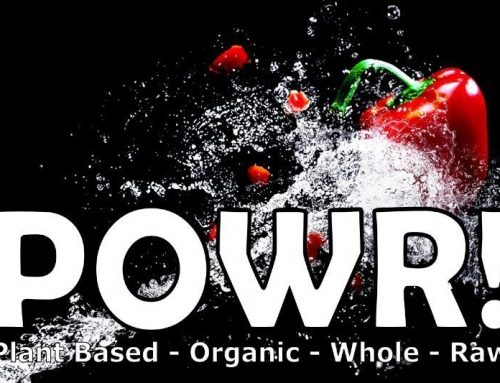It’s well known that rice contains more arsenic than any other food. This is of particular concern to vegans who often have a rice heavy diet.
Arsenic is one of the world's most toxic elements. Studies have detected high levels of arsenic in rice and the problem is getting worse as widespread pollution is raising the levels of arsenic in many foods, not just rice.
Arsenic is found in two forms
Organic arsenic: this is mainly found in plant and animal tissues.
Inorganic arsenic: this is found in rocks and soil or dissolved in water. This is the more toxic form.
How Does Arsenic Enter and Leave Your Body?
If you ingest arsenic in water or food, most of it will quickly be absorbed by your body.
Both inorganic and organic forms will then leave your body in your urine. Most of the inorganic arsenic will be gone within a few days, although some will remain in your body for several months or even longer and therefore the amount in your body will accumulate. Most organic arsenic will leave your body within several days.
What Is The Affect of Arsenic on Your Health?
Organic arsenic has long been recognized as a human poison, and large oral doses (above 60,000 ppb in water which is 10,000 times higher than 80% of U.S. drinking water arsenic levels) can lead to death.
If you swallow lower levels of inorganic arsenic (ranging from about 300 to 30,000 ppb in water; 100–10,000 times higher than most U.S. drinking water levels), you might experience irritation of your stomach and intestines, with symptoms such as stomachache, nausea, vomiting, and diarrhea.
Inorganic arsenic poisoning can reduce production of red and white blood cells. It can also cause fatigue, abnormal heart rhythm, blood-vessel damage resulting in bruising, and impaired nerve function causing a "pins and needles" sensation in your hands and feet.
A characteristic effect of long-term oral exposure to inorganic arsenic is the appearance of darkened skin and small "corns" or "warts" on the palms, soles, and torso.
The Department of Health and Human Services (DHHS), The International Agency for Research on Cancer (IARC), and the EPA have all determined that inorganic arsenic is known to be a human carcinogen (a chemical that causes cancer).
Ingesting arsenic has been reported to increase the risk of liver, bladder, skin and lung cancer.
None of these things are good for Athletes!
Rice Has More Arsenic Than any Other Food
Arsenic is found in nearly all foods and drink, but usually only in small amounts.
Rice accumulates more arsenic than any other food type and high levels of inorganic arsenic are also found in many rice-based products, including:
- Protein Powders - especially vegan ones
- Rice milk
- Rice bran
- Rice-based breakfast cereals
- Rice cereal (baby rice)
- Rice crackers
- Brown rice syrup
- Cereal bars containing rice and/or brown rice syrup.
Why Does Rice Have So Much Arsenic Compared With Other Foods?
The main source of inorganic arsenic is pollution from pesticides and herbicides, wood preservatives, phosphate fertilizers, industrial waste, mining activities, coal burning, smelting and volcanic activity.
Arsenic from these sources drains into the groundwater that is used for crop irrigation.
Rice is particularly susceptible to arsenic contamination as it’s grown in flooded (paddy) fields that use a lot of irrigation water and also because rice is particularly efficient at absorbing arsenic.
If you eat rice very regularly this may be a concern to you and you might want to look for ways to reduce the arsenic in rice, eat less rice or find alternatives that may contain less arsenic.
Here’s How to Reduce the Amount of Arsenic in Rice
The following tips should help reduce the arsenic content of your rice:
Wash the rice before cooking. This method may remove 10–28% of the arsenic but will also wash out the nutrients. According to the FDA, rinsing rice may reduce the levels of some nutrients, including folate, iron, niacin and thiamin, by 50 to 70%.
Water is often contaminated with arsenic as well, so using filtered water is best.
Cook rice in excess water (from six to 10 parts water to one part rice), and drain the excess water when cooked. This can reduce 40 to 60% of the inorganic arsenic content.
Eat White rice as Brown rice contains up to 80% more arsenic. (Of course we prefer Brown Rice for its other health benefits!)
Choose aromatic rice, such as basmati or jasmine
Organically-farmed rice may contain less arsenic, but all rice soaks up arsenic from the soil.
Choose rice from California or the Himalayan region, including North India, North Pakistan and Nepal.
You could even try cooking your rice in a filter coffee maker. This could reduce the arsenic content by 85% (But I’m not sure how many of the nutrients and vitamins will be lost – I would guess it’s a lot)
https://journals.plos.org/plosone/article?id=10.1371/journal.pone.0131608
Alternatives to Rice That May Have Less Arsenic
- Wild Rice
- CousCous
- Cauliflower Rice – I was a Rice Addict Until I discovered Cauliflower Rice!
- Quinoa
As always try and eat a balanced diet with everything taken in moderation.






Leave A Comment
You must be logged in to post a comment.